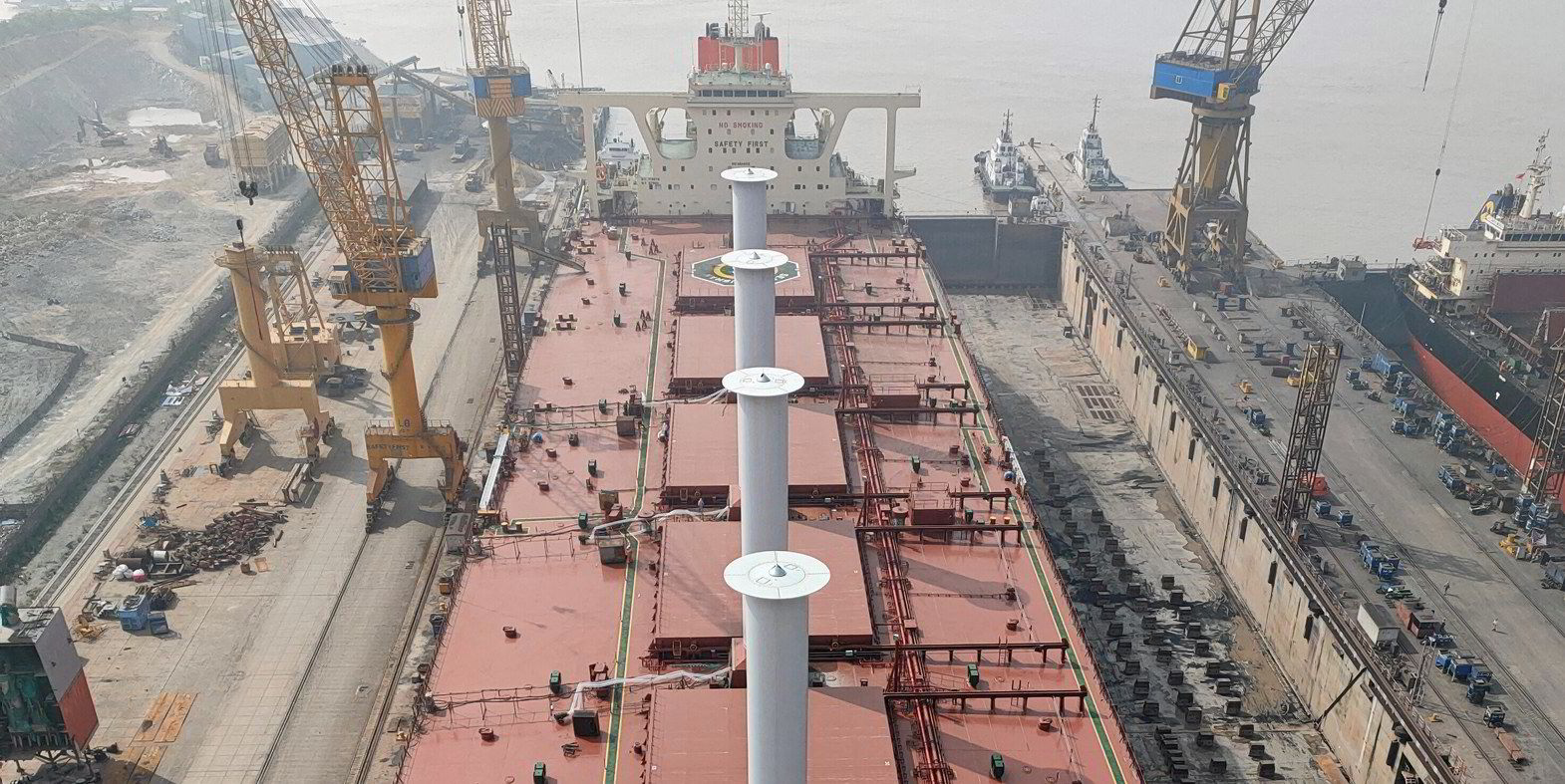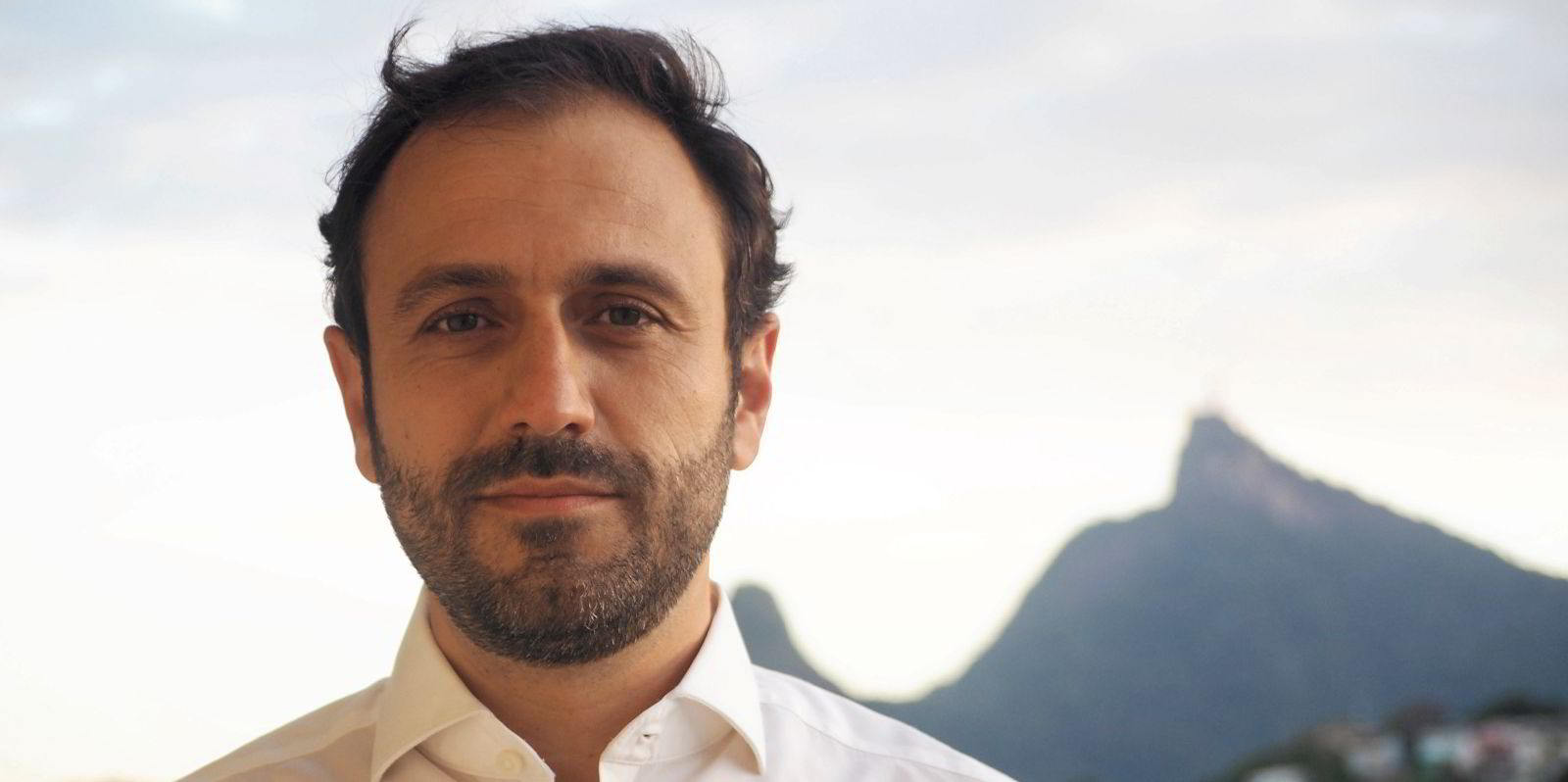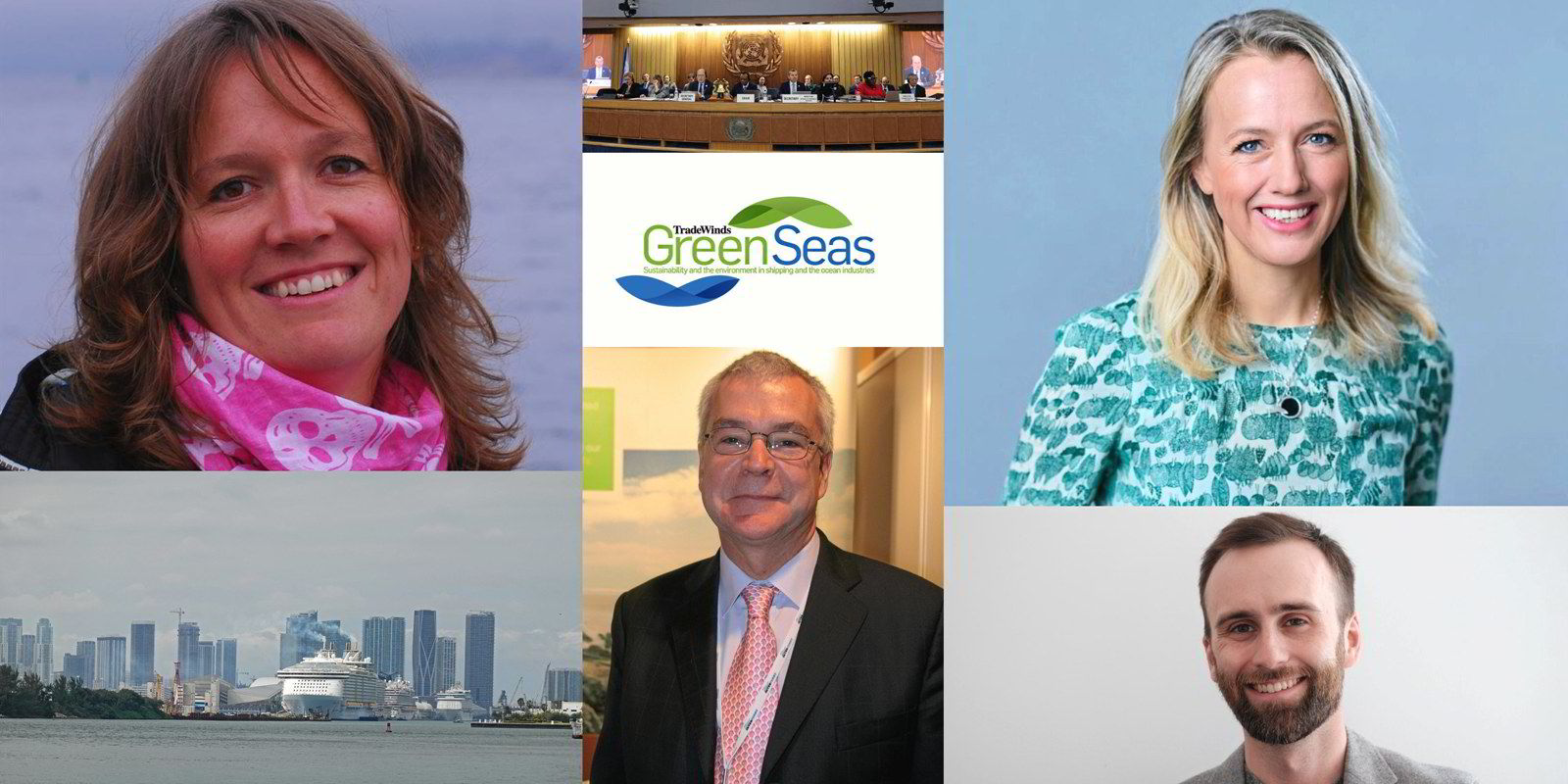Vale’s contest to build what could become the world’s largest methanol-fuelled bulkers, outfitted with wind propulsion and an array of energy-saving technologies, could allow it to slash well-to-wake greenhouse gas emissions by 90%.
Those carbon cuts could be achievable if the Brazilian mining giant procures renewable methanol to power the bulker giants, Vale shipping technical manager Rodrigo Bermelho told Green Seas.
As TradeWinds was first to report, the world’s largest iron ore miner has launched a request for proposals seeking shipowners to provide it with 325,000-dwt very large ore carriers capable of running on either methanol or conventional fuel oil. The company is seeking an unspecified number of newbuildings on 25-year contracts of affreightment, Bermelho said.
The dual-fuel ships will also have five rotor sails and fuel savings technologies that Bermelho said include more efficient main engines, hydrodynamic devices, shaft generators, variable frequency drives and advanced silicone paints.
All told, the full package of technologies vessels will allow them to cut tank-to-propeller emissions by 23%, including 14% from the wind propulsion and fuel-saving technology.
But well-to-wake, or well-to-propeller, calculations factor in not just the emissions onboard the vessel, but greenhouse gas pollution in the upstream fuel supply chain as well as carbon capture, which can bring reductions.
At the International Maritime Organization, which is mulling whether to adopt a zero-carbon or net-zero goal for 2050, there is growing support for basing that on a well-to-wake calculation, although that is not guaranteed.
“In the future, there is the possibility of using green methanol from renewable energy, with a potential for 90% emission reduction on a well-to-propeller basis, considering the entire fuel life cycle,” Bermelho said of the proposed VLOC newbuildings. “The higher number is possible because the vessel was designed for an entire round voyage with methanol.”

As part of its Ecoshipping project, Rio de Janeiro-based Vale has been exploring a variety of ways to slash emissions on its VLOCs, the mainstay of the iron ore trade between Brazil and main consumer China, and its request for proposals combines much of what the company looked at.
In addition to developing a multi-fuel tank arrangement that will allow the vessels to be adapted to run on either ammonia or LNG in the future, the company also carried out testing on the use of rotor sails and even using microbubbles as air lubrication. In the request for proposals, air lubrication did not make the cut.

Of the fuels it explored for use in its multi-fuel tanks, why did Vale choose methanol?
“Because it is less expensive in terms of initial investment, technically simpler to be integrated into the vessel design, and there is a potential to become a green fuel when produced from renewable energy,” Bermelho said in an interview by email.
Until now, orders for methanol-fuelled ships have focused on chemical and product tankers, as well as container ships, with AP Moller-Maersk leading the charge in the box sector.
But Vale is not alone in the dry bulk sector in looking at it. Commodities giant Cargill launched a request for proposals for what could become the first-ever methanol-fuelled bulker newbuildings.
Greg Dolan, chief executive of industry group Methanol Institute, said other major mining companies are looking at it as a wider array of shipping segments explores the alternative fuel.
Amid expectations for growing regulatory requirements, the fuel provides more certain future-proofing over the of a newbuilding than other alternative fuels, he explained.
‘You can act now’
“If you’re looking at something that’s going to be on the water for the next 20 years and is going to give you the ability to meet the increasing requirements in the regulatory landscape, methanol gives you the flexibility,” he said. “And you can act now.
While Vale’s request for proposals prefers rotor sails of the dimensions that the miner previously tested — 5 metres wide and 35 metres tall – Bermelho said other wind-assisted technology will be considered, though the company will evaluate port restrictions, operational procedures and data showing that alternative technology can perform as well as the rotors.

Vale’s contest comes as wind propulsion is gaining momentum as a way to reduce fuel costs and carbon emissions on large vessels.
Gavin Allwright, secretary at the International Windship Association, said there have so far been installations of the technology on 25 large ships.
In just 12 months, publicly announced projects will double that number.

Combining wind propulsion technology with energy efficiency, and adding in voyage optimisation, can lead to significant gains, is likely to be enough to keep ships in compliance with decarbonisation rules into the mid-2030s.
But it also defrays the higher cost of alternative fuel.
“With a zero-emissions or low-emissions fuel, you’re then pretty much future-proofing your ships, certainly to meet IMO 2050,” he said.
___________________
More on the environment and the business of the ocean
___________________
Podcast: Do scrubbers conflict with the Law of the Sea?
As the International Maritime Organization made strides in setting tough decarbonisation targets for shipping this month, environmental groups were disappointed by a lack of progress on their calls for a ban on exhaust gas scrubbers.
The Clean Arctic Alliance said that the groups’ claims — asserting that IMO rules allowing use of the devices as an exception to the IMO ban on fuel sulphur content are in conflict with the UN Law of the Sea — have been referred to the UN shipping regulator’s legal division.
This week’s episode of the Green Seas podcast explores the debate in detail.
___________________
Big-name charterers warn of Bimco’s ‘unworkable’ Carbon Intensity Indicator contract clause
Ian Lewis reports that a group of major charterers have slammed Bimco’s new Carbon Intensity Indicator (CII) time-charter clause as “imbalanced and unworkable”.
The shipping heavyweights have warned that no CII clauses could end up being adopted to the detriment of shipowners.
The charterers from the bulker, tanker and container sectors are therefore looking to develop ‘alternative clauses’ to redress a perceived contractual imbalance.
___________________
Orsted to build huge plant tapping green hydrogen for shipping fuel
Orsted said it will go ahead with building the pioneering FlagshipONE e-methanol green shipping fuel plant, Recharge reports.
The announcement came after the Danish renewables took full ownership of a project that it claimed represents the same level of risk as its early offshore wind farms.
The Danish company acquired the 55% of the project it did not already own from original developer Liquid Wind and announced a final investment decision for FlagshipONE, which aims from 2025 to produce 50,000 tonnes a year of e-methanol by combining green hydrogen produced using onshore wind and CO2 captured from a combined heat and power plant.




